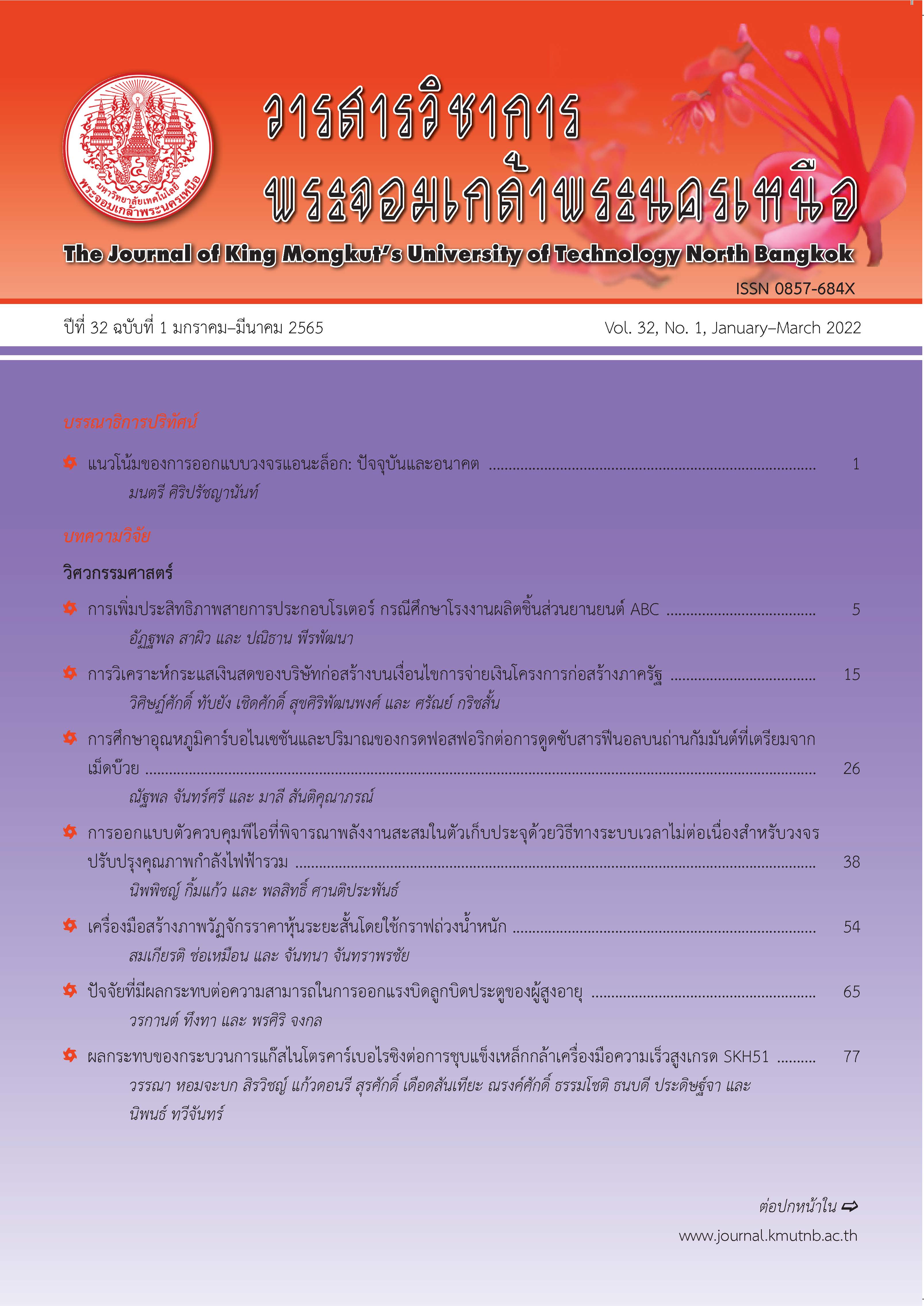The Studies of Carbonization Temperature and Amount of Phosphoric Acid on Phenol Adsorption on Activated Carbon Prepared from Apricot Stones
Main Article Content
Abstract
Activated carbon derived from apricot stones with phosphoric acid as a chemical agent was evaluated for the performance on phenol adsorption in a batch process at different pH and initial concentrations. In this work, two parameters, i.e. carbonization temperatures (400, 500 and 600°C) and apricot stones to phosphoric acid ratios (1 : 1.0, 1 : 1.5 and 1 : 2.0) were considered. The results showed that the carbonization temperature and the ratio of apricot stones to phosphoric acid were predominant on the properties of activated carbon prepared. Activated carbons carbonized at 500°C gave high iodine number, methylene blue adsorption, and phenol removal efficiency, especially AC500,2.0 whereas activated carbons carbonized at 600°C gave the lowest iodine number and methylene blue adsorption for all ratios. For the phenol adsorption study, the adsorption was explained very well by a pseudo-second-order kinetic model with R2 of 0.99 and the equilibrium adsorption data were fitted to the Langmuir isotherm except AC600,2.0.
Article Details
The articles published are the opinion of the author only. The author is responsible for any legal consequences. That may arise from that article.
References
[2] Wikipedia. (2020, May). Activated carbon. [Online]. Available: https://en.wikipedia.org/wiki/Activated_carbon
[3] K. S. Ukanwa, K. Patchigolla, R. Sakrabani, E. Anthony, and S. Mandavgane, “A review of chemicals to produce activated carbon from agricultural waste biomass,” Sustainability, vol. 11, pp. 6204–6239, 2019.
[4] H. Hadoun, Z. Sadaoui, N. Souami, D. Sahel, and I. Toumert, “Characterization of mesoporous carbon prepared from date stems by H3PO4 chemical activation,” Applied Surface Science, vol. 280, pp. 1–7, 2013.
[5] W. C. Lim, C. Srinivasakannan, and N. Balasubramanian, “Activation of palm shells by phosphoric acid impregnation for high yielding activated carbon,” Journal of Analytical and Applied Pyrolysis, vol. 88, pp. 181–186, 2010.
[6] S. Chakraborty, S. De, S. DasGupta, J. K. Basu, “Adsorption study for the removal of basic dye: Experimental and modeling,” Chemosphere, vol. 58, pp. 1079–1086, 2005.
[7] M. J. Martin, A. Artola, M. D. Balaguer, and M. Rigola, “Activated carbons developed from surplus sewage sludge for the removal of dyes from dilute aqueous solutions,” Chemical Engineering Journal, vol. 94, no. 3, pp. 231–239, 2003.
[8] R. Bansode, J. N. Losso, W. E. Marshall, R. M. Rao, and R. J. Portier, “Adsorption of volatile organic compounds by pecan shell- and almond shell-based granular activated carbons,” Bioresource Technology, vol. 90, no. 2, pp. 175–184, 2003.
[9] S. Mopoung, P. Moonsri, W. Palas, and S. Khumpai, “Characterization and properties of activated carbon prepared from tamarind seeds by KOH activation for Fe(III) adsorption from aqueous solution,” The Scientific World Journal, vol. 2015, pp. 1–5, 2015.
[10] S. Rattanapan, P. Pengjam, and P. Kongsune, “Preparation and characterization of mangosteen peel activated carbon,” Thaksin University Journal, vol. 17, no. 3, 2014 (in Thai).
[11] K. Sanprasert, “Phenol,” in The Treatment of Chemical Poisoning 1, 1st ed. Bangkok: We Plus Group (Thailand), 2016 (in Thai).
[12] Ministry of Industry, “Specify criteria for soil and groundwater contamination,” Ministry of Industry, Bangkok, Thailand, 2016.
[13] Standard Test Method for Determination of Iodine Number of Activated Carbon, ASTM D4607-14, 2014.
[14] N. Petrov, T. Budinova, M. Razvigorova, and V. Minkova, “Preparation of activated carbons from cherry stones, apricot stones and grape seeds for removal of metal ions from water,” in Proceedings 2nd Olle Indstorm Symposium on Renewable Energy-Bioenergy, Stockholm, Sweden, 1999, pp. 46–50.
[15] V. Daptardar, D. Koti, and D. Rajmohan, “Adsorption of BTX vapors on activated carbon pellets prepared from waste cashew nut shell,” JEST-M, vol. 4, no. 4, pp. 25–29, 2015.
[16] A. T. Mohd Din, B. H. Hameed, and A. L. Ahmad, “Batch adsorption of phenol onto physiochemical-activated coconut shell,” Journal of Hazardous Materials, vol. 161, no. 2–3, pp. 1522–1529, 2009.
[17] D. H. Everett, “Manual of symbols and terminology for physicochemical quantities and units, appendix II: Definitions, terminology and symbols in colloid and surface chemistry,” Pure and Applied Chemistry, vol. 31, pp. 577–638, 1972.
[18] B. Xie, J. Qin, S. Wang, X. Li, H. Sun, and W. Chen, “Adsorption of phenol on commercial activated carbons: Modelling and interpretation,” International Journal of Environmental Research and Public Health, vol. 17, no. 3, pp. 789, 2020.
[19] B. H. Hameed and A. A. Rahman, “Removal of phenol from aqueous solutions by adsorption onto activated carbon prepared from biomass material,” Journal of Hazardous Materials, vol. 160, no. 2–3, pp. 576–581, 2008.
[20] M. Ahmaruzzaman and D. K. Sharma, “Adsorption of phenols from wastewater,” Journal of Colloid and Interface Science, vol. 287, no. 1, pp. 14–24, 2005.

